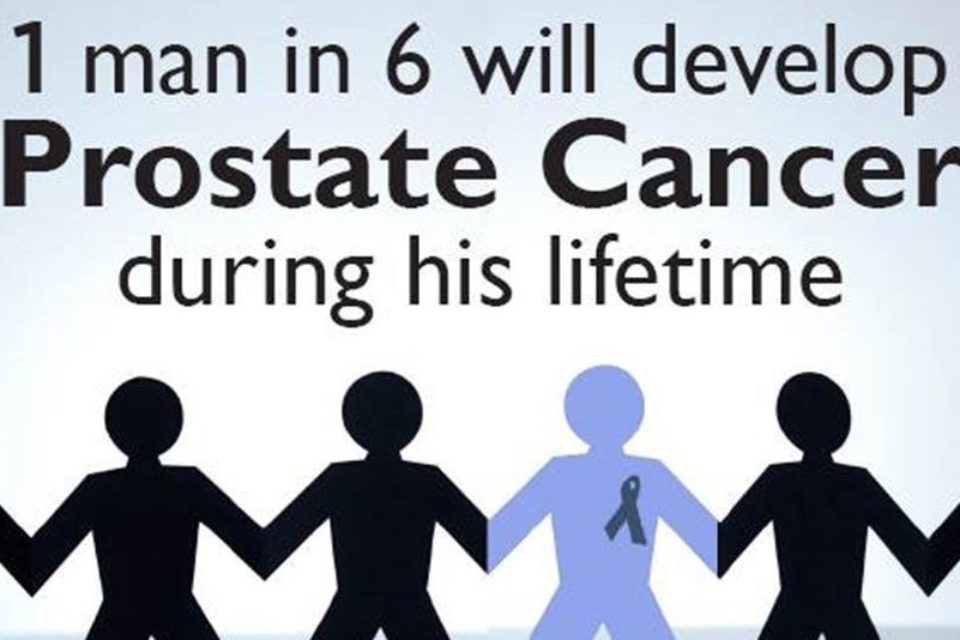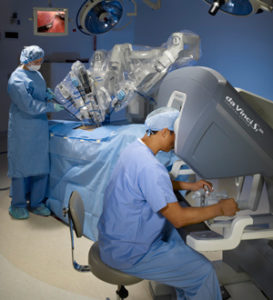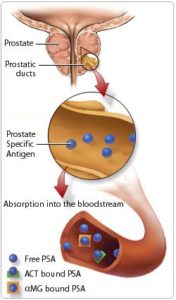Treating Prostate Cancer

Treating Prostate Cancer: In our previous post on Prostate Cancer, we talked about t’s causes, risk reduction and the PSA test with Warren Bromberg, MD, FACS, the Chief of the Division of Urology and Co-Director of the Institute for Robotic and Minimally Invasive Surgery at Northern Westchester Hospital. Our discussion with him continues here, with information about progression and treatment of the disease. By Elena Serocki
How rapidly does prostate cancer progress?
 It tends to be a slower growing, more indolent disease, says the doctor, though some men do have a more aggressive disease right from the beginning. “Many more men are diagnosed with prostate cancer than die from it,” says Dr. Bromberg. “The risk of being diagnosed with the disease is around 17%, and the risk of actually dying from it is about 3%.”
It tends to be a slower growing, more indolent disease, says the doctor, though some men do have a more aggressive disease right from the beginning. “Many more men are diagnosed with prostate cancer than die from it,” says Dr. Bromberg. “The risk of being diagnosed with the disease is around 17%, and the risk of actually dying from it is about 3%.”
When a man is diagnosed with the disease, his urologist looks at his “Gleason score”—an assessment by a pathologist of how the cancer looks under the microscope. The higher the Gleason score, the more likely the disease will progress quickly. The lower the score, the less likely it is to progress quickly. The doctors also take into account the PSA level. If there’s a relatively low PSA and Gleason score, then the disease is probably going to progress very slowly, perhaps over 20 years. A higher PSA and Gleason score could mean that the cancer may progress in one to three years.
Doctors have also been learning more and more about inherited genetics, and how certain genes may result in more rapid or aggressive cancers. These studies are still relatively new, says the doctor, but he believes that ultimately genetics will reveal much about prostate cancer and “are going to help us a lot in deciding treatment.”
What are the treatments for prostate cancer?
 A combination of factors determines if and how the disease is treated. For very low-risk cancer (based on certain criteria including PSA, family history, and biopsy), doctors do active surveillance rather than treatment. Dr. Bromberg estimates that 30% to 40% of men with prostate cancer fit in this category.
A combination of factors determines if and how the disease is treated. For very low-risk cancer (based on certain criteria including PSA, family history, and biopsy), doctors do active surveillance rather than treatment. Dr. Bromberg estimates that 30% to 40% of men with prostate cancer fit in this category.
For localized prostate cancer, active treatment includes surgery, which means removing the entire prostate. Today this is often being done robotically, with smaller incisions made, and quicker recovery. For patients at Northern Westchester Hospital (designated as a site of excellence for robotics), robotic prostate surgery generally means an overnight stay, a return to normal activities in two to three weeks, and complete recovery in four to six weeks.
Another option is external radiation therapy, which is administered daily in brief sessions over several weeks. The latest technology to treat prostate cancer, the Novalis ExacTrac Stereotactic Body Radiation  System, is being used by The Cancer Center at Northern Westchester Hospital. The Novalis system reduces the number of treatments, protects nearby organs, and minimizes side effects. In seed implantation, yet another treatment, the doctor implants small pellets containing radioactive material (usually iodine-125 or palladium-103) in the prostate gland. In some cases, a combination of external and internal radiation is recommended.
System, is being used by The Cancer Center at Northern Westchester Hospital. The Novalis system reduces the number of treatments, protects nearby organs, and minimizes side effects. In seed implantation, yet another treatment, the doctor implants small pellets containing radioactive material (usually iodine-125 or palladium-103) in the prostate gland. In some cases, a combination of external and internal radiation is recommended.
Cryosurgery is a minimally invasive procedure performed by inserting small needles into the prostate and infusing argon gas that freezes the prostate, causing cancer cells to die. Another minimally invasive treatment is HIFU—High-Intensity Focused Ultrasound. This experimental focal therapy uses sound waves to treat just the area of the cancer, with the goal of eliminating side effects.
For metastatic cancer, doctors usually use hormone therapy or chemotherapy. Since the prostate is dependent on testosterone, the goal is remove the hormone by periodic injections. This limits the production of testosterone and slows the growth of prostate cancer.
What else should we know about the disease?
 “Prostate cancer is the number 1 cancer in men in the U.S., and people die from it,” says Dr. Bromberg. “The good news is that, though it does have limitations, PSA testing is simple and inexpensive, and treatments are getting better. There are more options available than before. If you’re diagnosed, it would be helpful to have a discussion with your urologist about the options. We’ve probably had more advances in the past five years than in the last 100 years. We’re moving in the right direction.”
“Prostate cancer is the number 1 cancer in men in the U.S., and people die from it,” says Dr. Bromberg. “The good news is that, though it does have limitations, PSA testing is simple and inexpensive, and treatments are getting better. There are more options available than before. If you’re diagnosed, it would be helpful to have a discussion with your urologist about the options. We’ve probably had more advances in the past five years than in the last 100 years. We’re moving in the right direction.”
He cautions readers who search the internet for more about prostate cancer to be wary of the source. He recommends the following as reputable sources of information:
American Urological Association (https://www.auanet.org/), American Cancer Society (https://www.cancer.org/) and the National Cancer Institute (https://www.cancer.gov).
To learn more about prostate cancer treatment at Northern Westchester Hospital, visit www.nwhroboticsurgery.org. For more information about Dr. Bromberg, visit www.nwhroboticsurgery.org/DrBromberg.
More Articles from Northern Westchester Hospital
More Articles on Health & Fitness
















